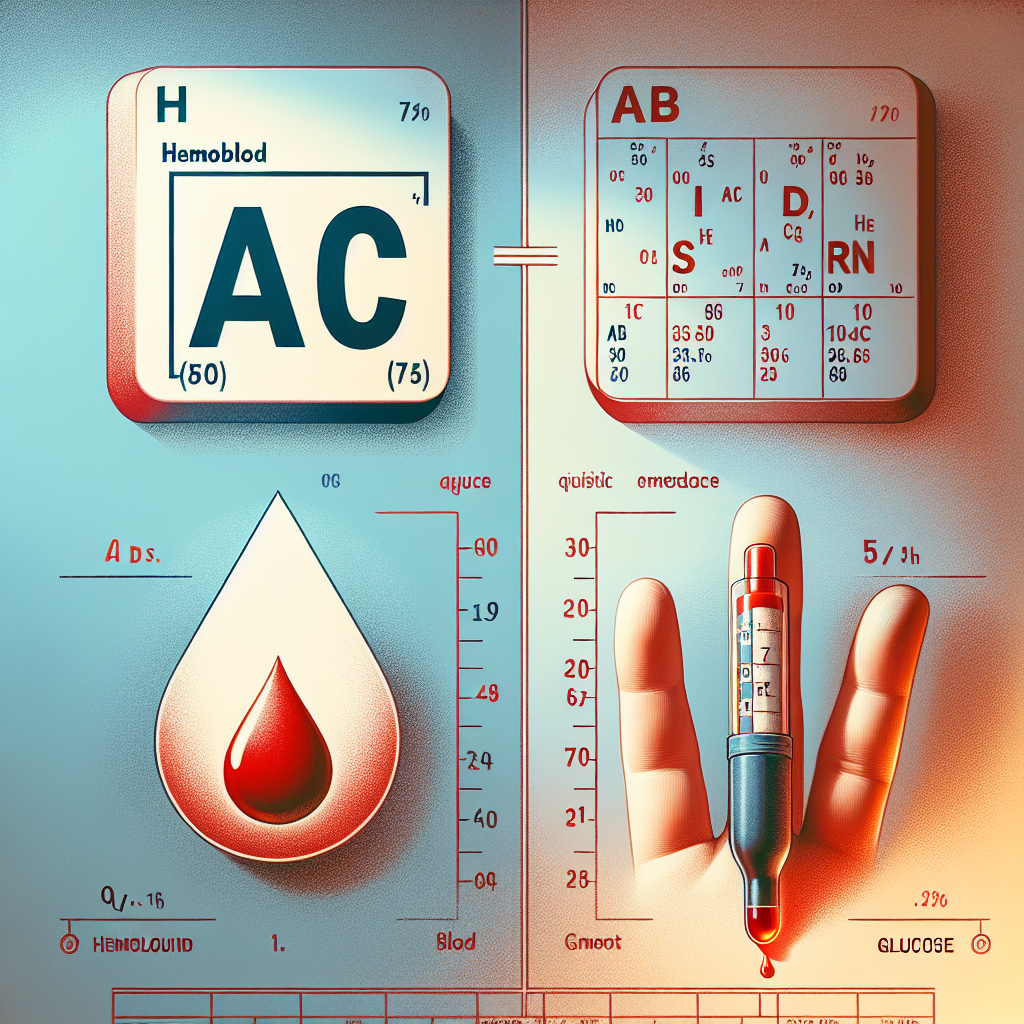Understanding a1c vs glucose test is essential for anyone managing blood sugar or evaluating diabetes risk. Both tests measure aspects of blood sugar control, but they do so in different ways and serve different clinical purposes. This article explains how each test works, when to use them, and the practical pros and cons to help you and your healthcare provider choose the right tool for diagnosis or monitoring.
a1c vs fasting glucose: what each test measures
The hemoglobin A1C (HbA1c) reflects average blood sugar levels over roughly the past two to three months by measuring glycated hemoglobin in red blood cells. Fasting glucose, by contrast, is a snapshot of your blood glucose at a single point in time, taken after an overnight fast. Together, they offer complementary information: the A1C captures long-term control while fasting glucose captures short-term metabolic status and immediate hyper- or hypoglycemia.
How the biology differs
A1C reports the percentage of hemoglobin molecules chemically modified by glucose (glycation). This makes it less sensitive to daily fluctuations but influenced by factors that change red blood cell turnover. A fasting glucose is affected by recent meals, stress, illness, and medications, and tells you how the body is handling glucose at that moment. Understanding the difference between glucose and a1c helps explain why results sometimes don’t match.
When to use each test
Clinicians commonly use both tests in different scenarios:
- Screening and diagnosis: Either A1C or fasting plasma glucose can be used to diagnose diabetes or prediabetes in many settings; an oral glucose tolerance test is another option for borderline cases.
- Monitoring control: A1C is typically used every 2–3 months to monitor long-term control in people with diabetes; self-monitoring of blood glucose (SMBG) or continuous glucose monitoring (CGM) provides immediate feedback for daily management.
- Special circumstances: Fasting glucose or OGTT may be preferred in pregnancy or when conditions affect A1C accuracy (e.g., certain hemoglobinopathies or recent blood loss).
Interpreting mismatched results
When A1C and fasting glucose disagree, consider measurement timing, recent illnesses, or factors affecting red blood cells. For example, someone with recent anemia or a hemoglobin variant may have an inaccurate A1C. Conversely, a single elevated fasting glucose may reflect temporary stress or a one-time dietary factor rather than chronic hyperglycemia. If results conflict, repeat testing or additional tests (like OGTT or CGM data) can clarify the clinical picture.
Pros and cons: practical comparison
- A1C — Pros: reflects long-term control, does not require fasting, useful for treatment targets and risk assessment.
- A1C — Cons: affected by conditions altering red blood cell lifespan, less useful for short-term changes or detecting day-to-day swings.
- Fasting glucose — Pros: inexpensive, widely available, useful for immediate metabolic status and detecting impaired fasting glucose.
- Fasting glucose — Cons: requires fasting, influenced by acute events, provides only a snapshot and may miss postprandial spikes.
For comprehensive education on treatment approaches that often go together with monitoring strategies, consult the comprehensive guide to Type 1 and Type 2 diabetes treatments for 2024, which outlines therapeutic choices alongside testing strategies.
Choosing the right test for you
Decisions should be individualized. If your goal is to understand long-term control and set targets for therapy, A1C is usually preferred. If you need to know how your body handled glucose after an overnight fast or to confirm a suspicion of impaired fasting glucose, then a fasting glucose or OGTT is appropriate. People using insulin or other therapies that cause rapid glucose changes may rely more heavily on SMBG or CGM, alongside periodic A1C checks.
Clinical guidance from major public health organizations emphasizes the importance of both metrics within a broader assessment of cardiovascular risk, symptoms, and comorbid conditions. For authoritative context on global diabetes prevalence and prevention strategies, see the World Health Organization’s diabetes fact sheet: WHO diabetes fact sheet.
Quick takeaways
- A1C measures average blood sugar over months; fasting glucose measures a single point in time.
- Use A1C for long-term monitoring and fasting glucose for immediate metabolic status or special diagnostic situations.
- Consider factors like anemia, hemoglobin variants, recent illness, and rapid therapy changes when interpreting results.
FAQ
Q: Can I use A1C to diagnose diabetes?
A: Yes — A1C can be used for diagnosis in many adults when the test is performed in a certified laboratory and there are no conditions that affect A1C accuracy. Providers may confirm with a second test or use fasting glucose/OGTT when results are borderline.
Q: Which is better for day-to-day management: fasting glucose or A1C?
A: For daily decisions about insulin dosing or meal planning, real-time glucose measurements (SMBG or CGM) are superior. A1C is better for evaluating overall trends and adjusting long-term therapy.
Q: What if my A1C and fasting glucose disagree?
A: Discuss potential causes with your clinician — they may repeat tests, check for conditions that affect A1C, or use additional tests like OGTT or continuous monitoring to determine the difference between glucose and a1c and clarify your diagnosis or management plan.






